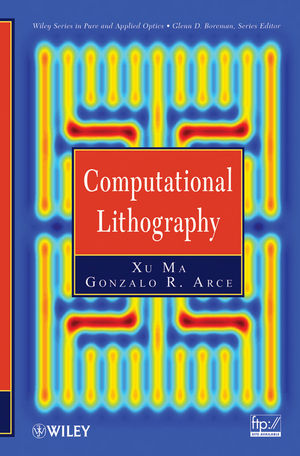Computational LithographyISBN: 978-0-470-59697-5
Hardcover
244 pages
September 2010
 This is a Print-on-Demand title. It will be printed specifically to fill your order. Please allow an additional 15-20 days delivery time. The book is not returnable.
|
||||||
Acknowledgments.
Acronyms.
1 Introduction.
1.1 Optical Lithography.
1.2 Rayleigh’s Resolution.
1.3 Resist Processes and Characteristics.
1.4 Techniques in Computational Lithography.
1.5 Outline.
2 Optical Lithography Systems.
2.1 Partially Coherent Imaging Systems.
2.2 Approximation Models.
2.3 Summary.
3 Rule-Based Resolution Enhancement Techniques.
3.1 RET Types.
3.2 Rule-Based OPC.
3.3 Rule-Based PSM.
3.4 Rule-Based OAI.
3.5 Summary.
4 Fundamentals of Optimization.
4.1 Definition and Classification.
4.2 Unconstrained Optimization.
4.3 Summary.
5 Computational Lithography with Coherent Illumination.
5.1 Problem Formulation.
5.2 OPC Optimization.
5.3 Two-Phase PSM Optimization.
5.4 Generalized PSM Optimization.
5.5 Resist Modeling Effects.
5.6 Summary.
6 Regularization Framework.
6.1 Discretization Penalty.
6.2 Complexity Penalty.
6.3 Summary.
7 Computational Lithography with Partially Coherent Illumination.
7.1 OPC Optimization.
7.2 PSM Optimization.
7.3 Summary.
8 Other RET Optimization Techniques.
8.1 Double-Patterning Method.
8.2 Post-Processing Based on 2D DCT.
8.3 Photoresist Tone Reversing Method.
8.4 Summary.
9 Source and Mask Optimization.
9.1 Lithography Preliminaries.
9.2 Topological Constraint.
9.3 Source–Mask Optimization Algorithm.
9.4 Simulations.
9.5 Summary.
10 Coherent Thick-Mask Optimization.
10.1 Kirchhoff Boundary Conditions.
10.2 Boundary Layer Model.
10.3 Lithography Preliminaries.
10.4 OPC Optimization.
10.5 PSM Optimization.
10.6 Summary.
11 Conclusions and New Directions of Computational Lithography.
11.1 Conclusion.
11.2 New Directions of Computational Lithography.
Appendix A: Formula Derivation in Chapter 5.
Appendix B: Manhattan Geometry.
Appendix C: Formula Derivation in Chapter 6.
Appendix D: Formula Derivation in Chapter 7.
Appendix E: Formula Derivation in Chapter 8.
Appendix F: Formula Derivation in Chapter 9.
Appendix G: Formula Derivation in Chapter 10.
Appendix H: Software Guide.
References.
Index.



